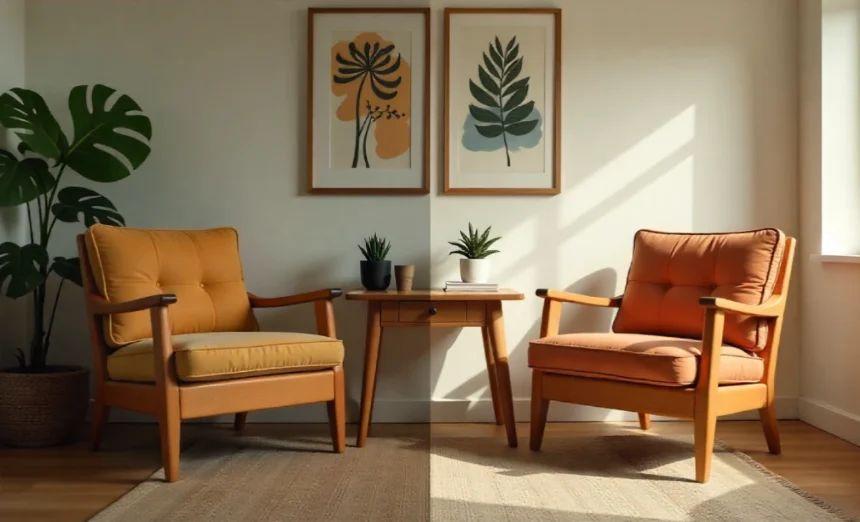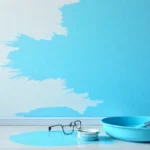Your living room feels stuck in the past, but your budget won’t stretch to new furniture. You’re not alone. Many Australian homeowners face this challenge, watching their once-loved pieces look increasingly dated while quality replacements cost thousands.
- Quick Visual Updates That Transform Any Piece
- Strategic Structural Modifications
- Leg Replacement: Instant Style Upgrade
- Surface Additions: Creating Contemporary Lines
- Fabric and Upholstery Refreshers
- Finishing Touches That Complete the Look
- Budget-Friendly Material Solutions
- Professional Tricks for Amateur Renovators
- Conclusion
The good news? You can transform tired furniture into contemporary showstoppers with simple, affordable upgrades. This guide reveals proven techniques that breathe new life into old pieces, saving you money while creating a fresh, modern aesthetic.
Quick Visual Updates That Transform Any Piece
Paint: The Ultimate Furniture Makeover Tool
Paint ranks as the most powerful weapon in your modernisation arsenal. A fresh coat can completely alter a piece’s personality, taking it from vintage to contemporary in hours.
Choose bold, current colours like deep navy, charcoal grey, or crisp white for maximum impact. Matt finishes work best on most wooden furniture, while high-gloss paint suits pieces you want to highlight as focal points.
Example: A 1980s oak dining table painted in matte black instantly becomes a sleek, modern centrepiece. The transformation costs under $50 but delivers the impact of a $2,000 replacement.
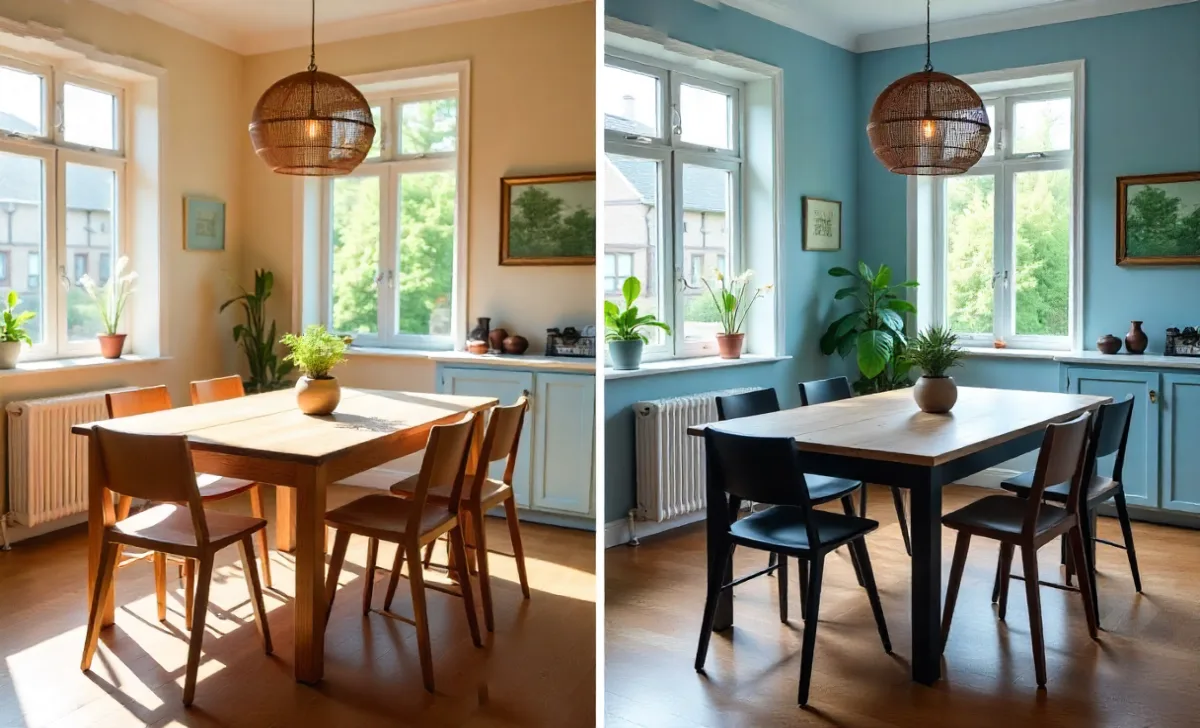
Hardware Upgrades: Small Changes, Big Results
Swapping outdated handles, knobs, and hinges creates an immediate modern look. This simple change works particularly well on kitchen cabinets, dressers, and wardrobes.
Select hardware with clean lines—brushed brass, matte black, or stainless steel finishes dominate current design trends. Avoid ornate details that scream “vintage.”
Tip: Measure existing holes before shopping. If new hardware doesn’t align, fill old holes with wood filler, sand smooth, then drill fresh holes.
Strategic Structural Modifications
Leg Replacement: Instant Style Upgrade
Changing legs transforms a piece’s entire character. Hairpin legs add mid-century modern appeal, while tapered legs create Scandinavian vibes.
This technique works brilliantly on coffee tables, side tables, and some dining tables. Most furniture supply stores stock replacement legs in various styles and finishes.
Example: Replace bulky turned legs on a traditional coffee table with sleek steel hairpin legs. The piece shifts from country cottage to urban loft style.
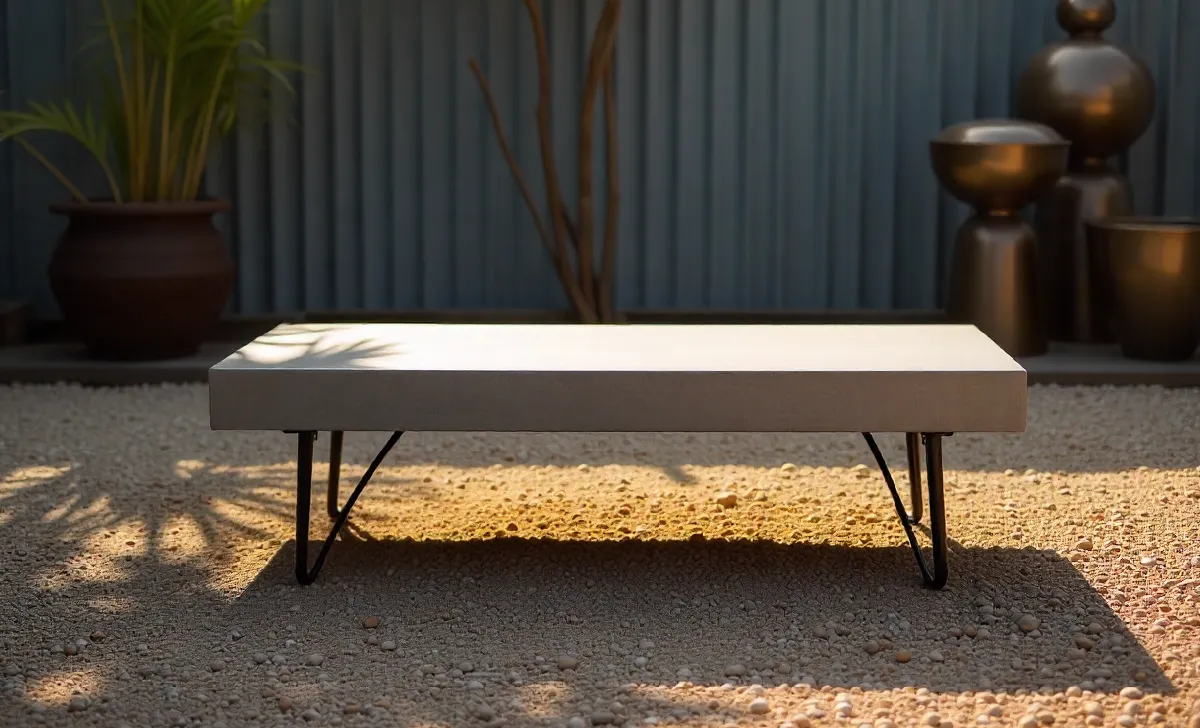
Surface Additions: Creating Contemporary Lines
Add floating shelves, LED strip lighting, or geometric panels to flat surfaces. These modifications introduce modern elements while maintaining the furniture’s basic function.
Floating shelves mounted on cabinet sides create display space and visual interest. LED strips installed under shelves or behind furniture add ambient lighting that feels very current.
Fabric and Upholstery Refreshers
Reupholstering chairs and sofas sounds expensive, but modern techniques make it affordable. Focus on statement fabrics in current patterns—geometric prints, bold solids, or textured weaves.
Can’t afford full reupholstery? Try these alternatives:
- Slip covers in contemporary fabrics
- New cushion covers in modern prints
- Throw pillows that complement your colour scheme
- Fabric spray paint for quick colour changes
Pro Tip: Choose performance fabrics that resist stains and wear. They cost slightly more but maintain their fresh appearance longer.
Finishing Touches That Complete the Look
Texture and Material Mixing
Modern design celebrates mixed materials. Add metal accents to wooden pieces, introduce glass elements, or incorporate woven textures.
Stick-on metal strips, adhesive mirrors, or removable wallpaper can introduce these elements without permanent changes. This approach works particularly well on large, flat surfaces like wardrobe doors or table tops.
Styling Around Your Updated Pieces
Your newly modernised furniture needs appropriate companions. Clear away fussy decorative items and choose accessories with clean lines and neutral colours.
Group items in odd numbers, leave plenty of white space, and select pieces that complement rather than compete with your updated furniture.
Example: Style your freshly painted console table with a single large plant, one piece of modern art, and a sleek table lamp. This restrained approach emphasises the furniture’s new contemporary character.
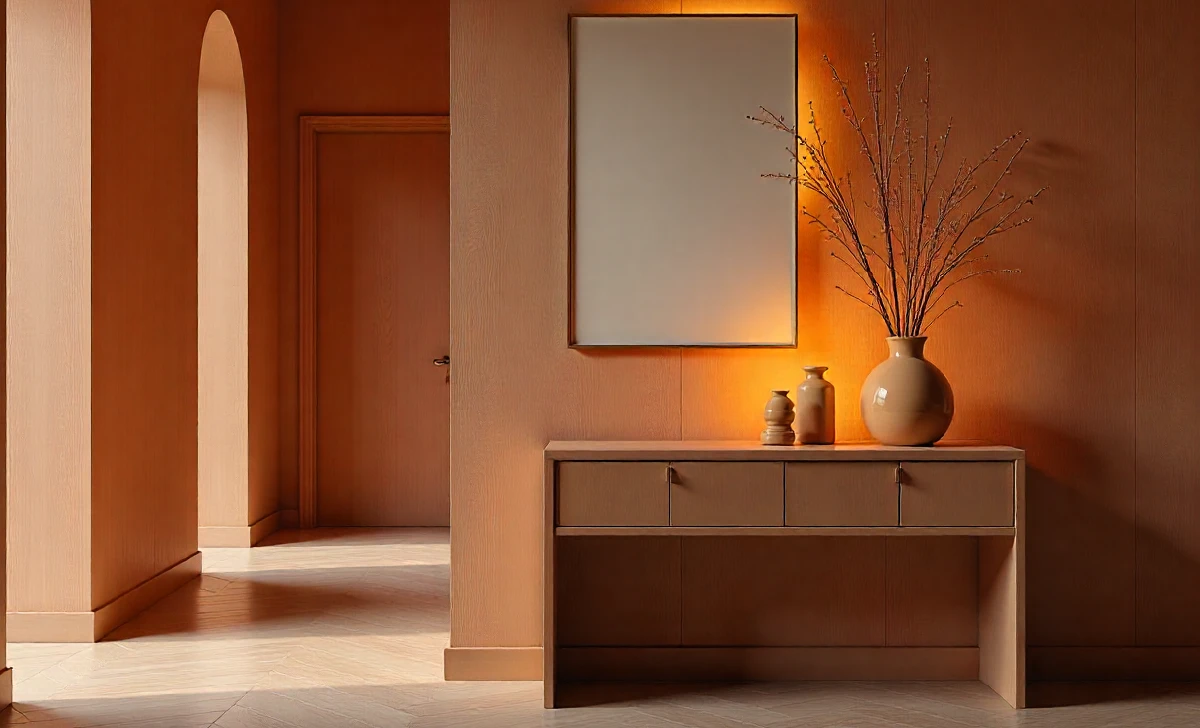
Budget-Friendly Material Solutions
Vinyl Wraps: Temporary Transformation
Architectural vinyl films offer a removable way to change surface finishes. Wood grain, marble, and solid colour options let you experiment without permanent commitment.
These films work best on smooth surfaces and can withstand normal wear. They’re perfect for renters who can’t make permanent changes.
DIY Staining and Refinishing
Strip old finishes and apply modern stains to wooden furniture. Dark walnut and ebony stains create sophisticated, contemporary looks, while white-washing produces Scandinavian-inspired pieces.
This process requires patience but costs a fraction of professional refinishing. Rent sanders from hardware stores to speed the process.
Professional Tricks for Amateur Renovators
Primer Importance: Don’t Skip This Step
Quality primer ensures paint adhesion and colour accuracy. Use high-adhesion primer on glossy surfaces, and tinted primer when making dramatic colour changes.
This step prevents peeling, chipping, and uneven coverage—problems that make DIY projects look amateur.
Tool Investment: Buy Once, Use Often
Quality brushes, rollers, and sanders produce professional results. Cheap tools leave brush marks, create uneven surfaces, and make projects frustrating.
Invest in mid-range tools that you’ll use for multiple projects. Store them properly and they’ll serve you for years.
Conclusion
Making old furniture look modern doesn’t require expensive replacements or professional services. Paint, hardware updates, structural modifications, and strategic styling can transform any piece into a contemporary showpiece.
Start with one piece and simple changes like paint or new hardware. As your confidence grows, tackle more complex modifications. Your budget will thank you, and your home will reflect current design trends without the hefty price tag.
Which piece in your home needs a modern makeover first? Share your transformation plans in the comments below, and don’t forget to post before-and-after photos of your projects.
